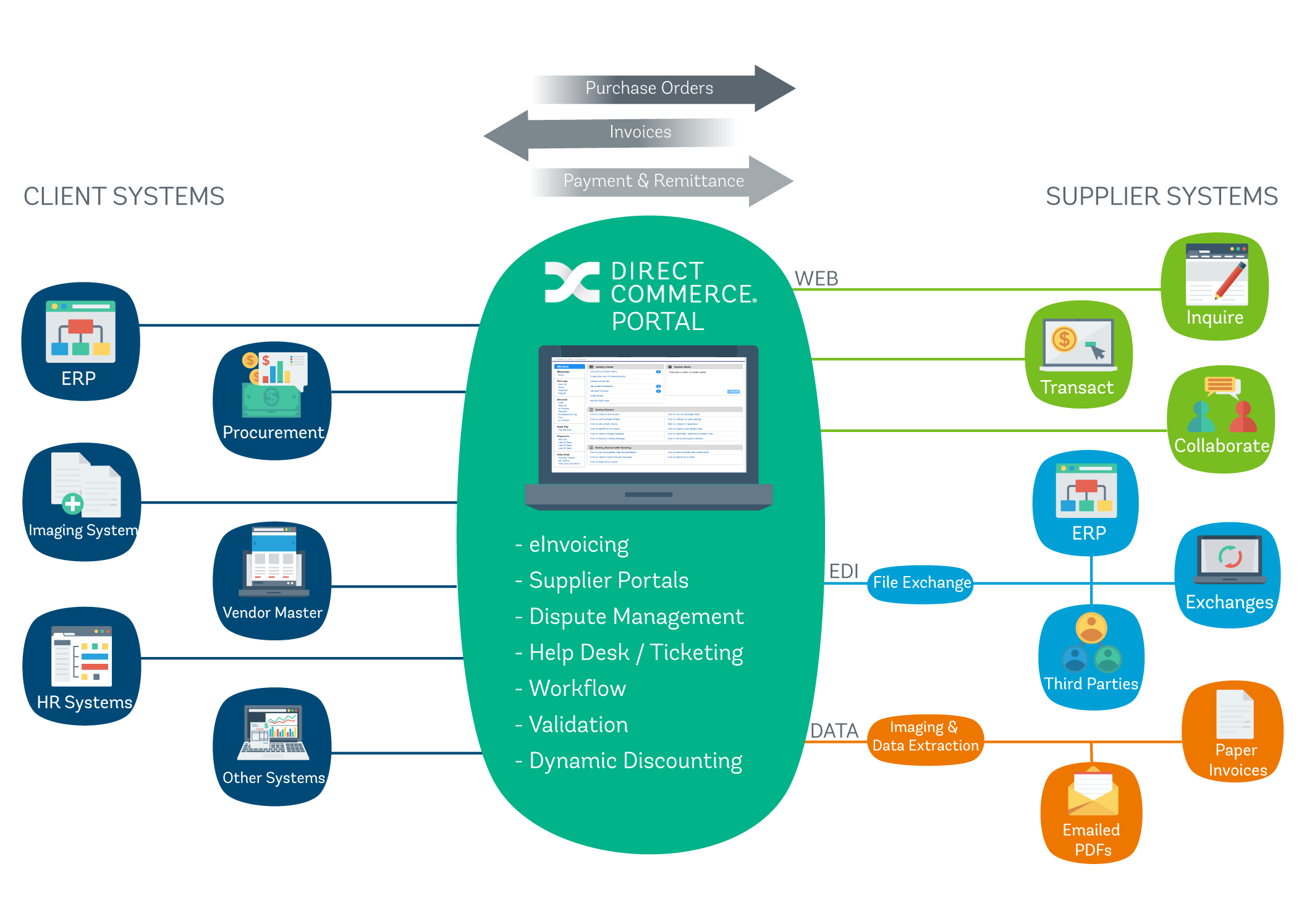Depending on your business objectives and current infrastructure, crafting an S2P solution from multiple vendors can get you better results.
Shared services organizations are charged with building capabilities that create business efficiency and ensure business continuity. As new technologies emerge, the shared services group is on the front lines of adoption and adaptation to maximize performance across business units.
A best-of-breed approach supports that model as solutions—and business needs—evolve. Instead of staying locked in with one vendor who might be a jack of all trades and master of none, shared services professionals are better served by remaining open to having the best available solutions from multiple vendors coexist.
In this way, the needs of different departments for expertise in particular processes and technologies, such as Accounts Payable and Procurement, have a better chance of being met.
Direct Commerce, for example, offers domain expertise in AP Automation—eInvoicing, supplier portals, dispute management, dynamic discounting, etc. Enterprise finance professionals often come to us with different coexistence strategies they’re looking to implement. Let’ s take a look at three common scenarios:
1. Procurement software is great, but AP Automation software is ineffective
The business is perfectly happy with its procurement solution but desperately needs an AP Automation upgrade. Executives desire a seamless integration that allows their procurement staff to continue to create and execute requisitions, POs, etc. but would like an AP Automation solution that suppliers will adopt and that support unique workflow and validation processes for AP and finance teams.
2. ERP needs an upgrade or a new ERP is being implemented
When ERP changes are being made, organizations often wonder if their current solutions will continue to work without a major disruption. The ability to integrate a solution regardless of ERP is a key requirement for coexistence. Customers need the flexibility to continue running their AP Automation solution even when the broader organization determines that changes are required to their back-end systems.
3. An easy-to-use supplier interface is needed for inquiries, disputes, and early payments
When invoice processing occurs inside an ERP, suppliers don’t have visibility into the status of their transactions. By offering an easy to use portal, suppliers can track status, answer questions themselves, and accept discounts for early payment. Integrated supplier portals are a great way to eliminate inquiries and backlogs while generating huge savings from early payments.
With a little planning, it’s actually straight forward to integrate Direct Commerce AP Automation solutions with your ERP and other systems, so your data can be shared among them all. We’re often asked what this coexistence actually looks like, and the diagram below shows how transactions typically move across integrated platforms:
 To facilitate coexistence, just be sure to involve all your vendors and your IT department early in the process so you can make a seamless transition.
To facilitate coexistence, just be sure to involve all your vendors and your IT department early in the process so you can make a seamless transition.
It doesn’t have to be all or nothing when it comes to finding the right way to manage your enterprise S2P processes. To learn more, tap into the expertise of Direct Commerce. Email sales@directcommerce.com or call 415-288-9700 and we’ll arrange a free consultation or demo.

